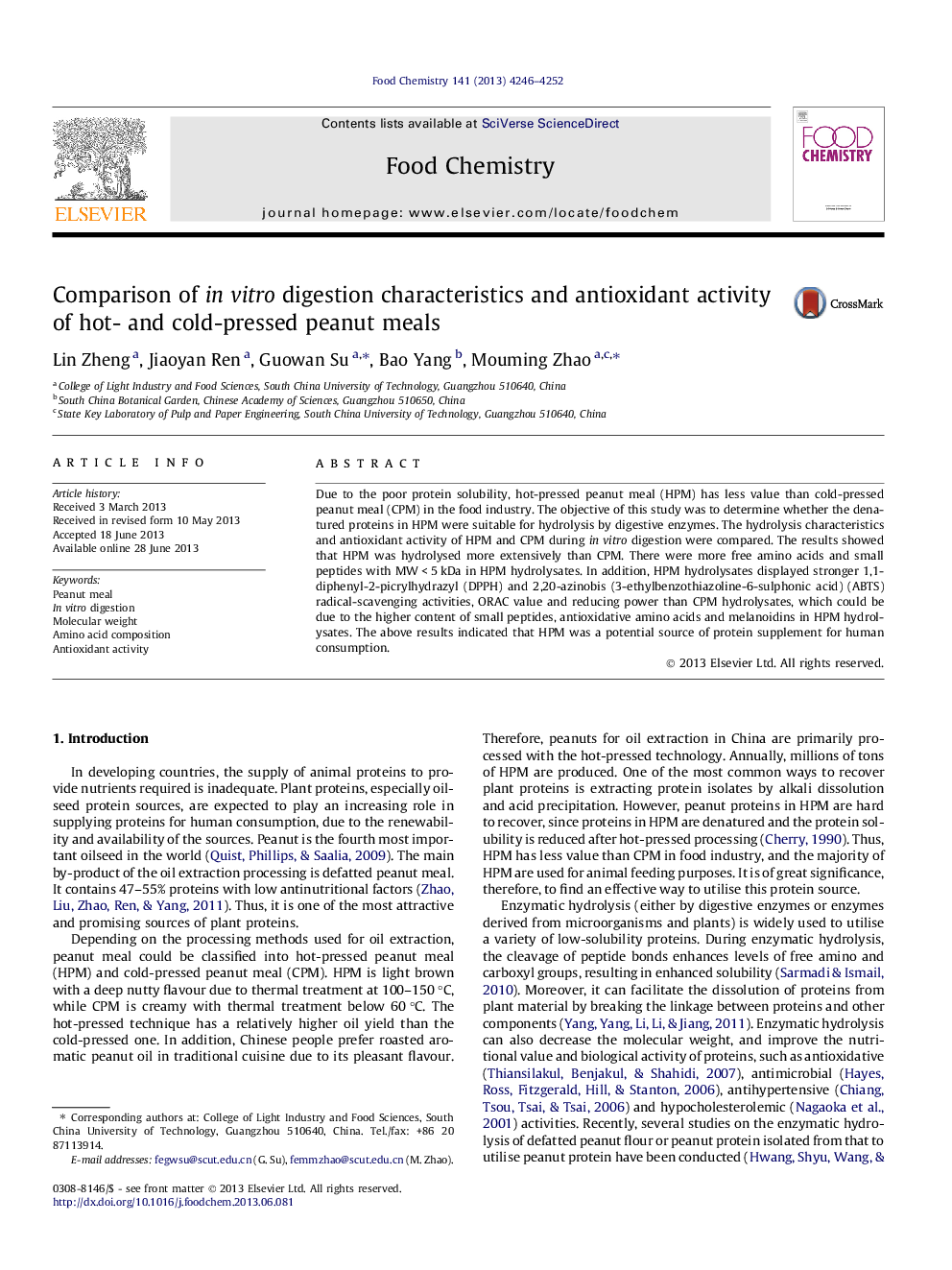| Article ID | Journal | Published Year | Pages | File Type |
|---|---|---|---|---|
| 10539911 | Food Chemistry | 2013 | 7 Pages |
Abstract
Due to the poor protein solubility, hot-pressed peanut meal (HPM) has less value than cold-pressed peanut meal (CPM) in the food industry. The objective of this study was to determine whether the denatured proteins in HPM were suitable for hydrolysis by digestive enzymes. The hydrolysis characteristics and antioxidant activity of HPM and CPM during in vitro digestion were compared. The results showed that HPM was hydrolysed more extensively than CPM. There were more free amino acids and small peptides with MWÂ <Â 5Â kDa in HPM hydrolysates. In addition, HPM hydrolysates displayed stronger 1,1-diphenyl-2-picrylhydrazyl (DPPH) and 2,20-azinobis (3-ethylbenzothiazoline-6-sulphonic acid) (ABTS) radical-scavenging activities, ORAC value and reducing power than CPM hydrolysates, which could be due to the higher content of small peptides, antioxidative amino acids and melanoidins in HPM hydrolysates. The above results indicated that HPM was a potential source of protein supplement for human consumption.
Related Topics
Physical Sciences and Engineering
Chemistry
Analytical Chemistry
Authors
Lin Zheng, Jiaoyan Ren, Guowan Su, Bao Yang, Mouming Zhao,
